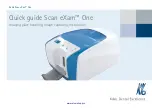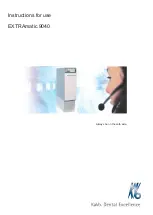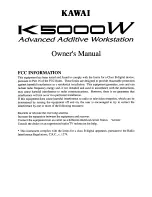
SkinGuard® Series
Owner’s Manual
PN 400901 Rev. C
ECO 18-0281
Page 6
Conditions such as restlessness, mental deterioration and dementia or seizure disorders (uncontrolled body movement),
sleeping problems, and incontinence can significantly impact a patient’s risk of entrapment, Pediatric patients or patients
with small body size may also have an increased risk of entrapment.
BED RAIL ENTRAPMENT RISK NOTIFICATION
•
Bed rails are intended to prevent an individual from inadvertently rolling out of bed, provide assistance to a patient when
repositioning and to provide a sense of security. NEVER use bed rails for restraint purposes where “restraint” means
preventing or hindering the patient within the bed from exiting the bed as they wish. Use of rails as a means of restraint
significantly increases a patient’s risk of entrapment.
•
Bed rails are intended to be used as a pair in a bed system. When in use, both side rails must be in the up position,
except when the patient is entering or exiting the bed. Use with one side rail up and one side rail down could create an
increased risk of entrapment.
•
Bed rails and/or their mountings should not be used if they are bent or otherwise deformed. Bent or deformed bed rails
and/or bed rail mountings increase gaps and increase the risk of entrapment. DO NOT place pressure upon bed rails
while moving the bed. Although bed rails are not rated to any specific patient weight limitation, the bed rails or their
mountings may become deformed or broken if excessive side pressure is exerted on the bed rails.
•
Mattress overlays or active therapeutic support surfaces (TSS), which support the patient on an air mattress or
specialized foam layer, may present an increased risk of entrapment for some patients. The benefit of TSS product use
must be weighed against the potential increased risk of entrapment. The risk judgment must be performed by a medical
professional.
The U.S. Food and Drug A
dministration in partnership with the U.S. Department of Veterans Affairs, Health Canada’s
Medical Devices Bureau and representatives from national health care organizations and provider groups, patient advocacy
groups, and medical bed and equipment manufacturers including the Hospital Bed Safety Workgroup, a collection of experts
from the United States FDA, health care professionals and manufacturers of hospital beds, published guidelines regarding
body part dimensions as they relate to a bed system’s safety. These guidelines,
“Hospital Bed System Dimension and
Assessment Guidance to Reduce Entrapment”
contain additional information on the risk of entrapment. Visit the FDA
website at
and search for
“bed rail entrapment” to learn about the risk of entrapment or to view the FDA
guidelines document.
The above statements are not intended to be a complete or comprehensive list of all risks of entrapment. KAP Medical
recommends that whenever bed
products are used that the patient, the patient’s family and/or the patient’s primary day-to-
day caregiver discuss entrapment risks with the patient’s medical care provider.
MANUFACTURER’S LIABILITY
KAP Medical’s original warranty on the SkinGuard® Mattress System will remain in effect during the warranty
period provided any changes, readjustments, or repairs have been carried out by a factory authorized service
center or a technician of KAP Medical or whenever the control unit and mattress system has been used
according to the following operating instructions.
KAP Medical’s liability under the warranty is the repair or replacement provided and, in no event, shall KAP
Medical’s liability exceed the purchase price paid by the customer for the product. Under no circumstances shall
KAP Medical be liable for any loss, direct, indirect, incidental, or special damages arising out of or in connection
with the use of this product.








































